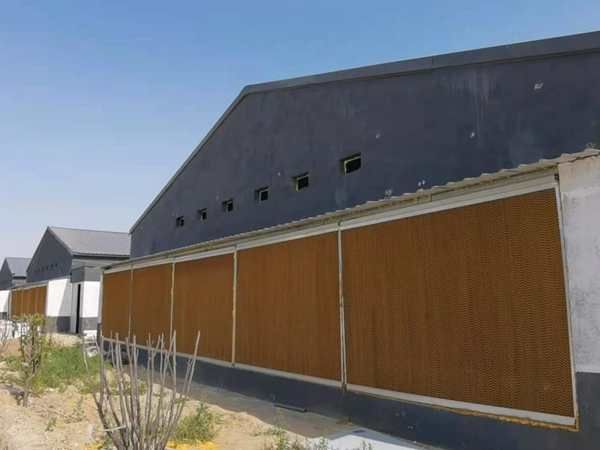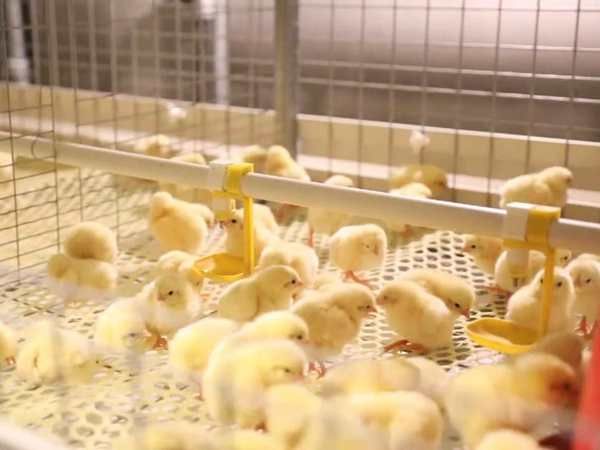Industry news
How to breed chickens in large chicken farm? Doing the following seven points is not far from success (1)
Added:2021-12-21

The daily management of chicken farm includes nine points: relatively stable temperature, appropriate humidity, ventilation, regular and quantitative feeding, reasonable light, uninterrupted drinking water, hygiene and epidemic prevention and medication, observation of the flock, and feeding records. The quality of these details directly affects the breeding performance.
The first seven hardware tasks are to provide the chickens with the most superior growth environment, so that they can eat well, drink well, rest well, and do not get sick. The prerequisite for this purpose is to work hard to reduce the adverse effects of various stresses on the chickens. The temperature cannot be high and low, the humidity cannot be too dry or too humid, and the ventilation cannot be high and low, etc. However, in actual work, because these contents are interrelated, it is easy to meet only one indicator, but it is difficult to meet these factors at the same time to meet the standard. It is necessary to analyze which is the main contradiction and which is the secondary contradiction based on factors such as different seasons, different periods, and chicken performance. To resolve these contradictions, we must fully understand their nature and their internal connections.
Today we discuss the first two factors, and we will launch a series of articles for a comprehensive discussion in the follow-up.
1.Relatively stable temperature:
The body temperature of an adult chicken is about 41°C, and the body temperature of a newborn chick is about 3°C lower, until it is close to an adult chicken after ten days of age. When we talk about high or low temperature, we refer to the relative high or low, that is, the indoor temperature is compared with the standard temperature of the day's age.
The effect of temperature on chickens and the solution: For fast-growing chickens, too high, too low or sudden temperature changes will affect their growth rate. Only the chicken coop provides a relatively stable temperature and maintains its own necessary energy can make sure chickens healthy and fast growth. During the brooding period, due to the low body temperature of the chicks, the whole body grows fluffy, which cannot be used for heat preservation, and it is difficult to adapt to changes in the outside temperature. They are afraid of cold and heat, so the brooding temperature is particularly important. It directly affects the thermoregulation, exercise, feeding, drinking, and feed conversion rate of chicks.
The temperature for the first ten days of brooding is best to maintain the standard temperature, and the temperature difference between day and night should not exceed ±1°C. If the temperature is too low, it will cause poor absorption of the yolk, indigestion (overfeeding), respiratory diseases, and increased chest and leg diseases; when the temperature is too high and the humidity is low, it will drink too much water, causing diarrhea, reduced feed intake, and growth Slowly.
If kept under high temperature for a long time, it will cause poor cold resistance, weak disease resistance, and susceptibility to respiratory diseases. Therefore, when breeding in winter, the temperature in the house should not be higher than the standard temperature after three weeks, and should not be lower than the standard temperature by 5°C. When the temperature is too low, the feed conversion rate will decrease. In the middle of rearing (18~35 days of age), it is also very sensitive to temperature, especially during the replacement feathers period. During this period, it is necessary to maintain the indoor temperature and ensure that there is sufficient ventilation, so it is likely that because of the poor grasp of the amount of ventilation, the temperature difference will be too large, causing diarrhea or respiratory diseases. This is the most difficult part of the whole chicken raising process. We must deal with the contradiction between temperature and ventilation according to the season, weather, geographical location, performance of the chicken house, auxiliary facilities, etc.
Ventilate when the temperature rises. Pay attention to heat preservation, and control the temperature difference not to exceed 3°C. In the later stage of brooding, especially the two days before the transfer, try to keep the indoor temperature and the outside temperature relatively consistent according to the seasonal conditions, that is: the outside environment temperature is high, the indoor temperature is slightly higher, the outside environment temperature is low, the indoor temperature Slightly lower. This can reduce the death loss caused by stress during the delivery of chickens. In short, ambient temperature, ventilation, and humidity control the indoor temperature, and temperature plays a key role in the healthy and rapid growth of chickens.
Mutations in temperature can cause stress and cause many diseases. The level of temperature determines the conversion rate and disease resistance of feed: that is, high temperature has high feed conversion rate but poor disease resistance; low temperature has low feed conversion rate but strong disease resistance. It is necessary to grasp the “degree” according to the actual situation and choose the best temperature in different seasons and different periods. The most important factor affecting temperature is the change of weather. Therefore, you must keep abreast of the weather changes at any time. The situation is kept in mind through the weather forecast.
Humidity is the abbreviation of relative humidity, it refers to the amount of moisture in the air, not the moisture level of the ground. Humidity is not only related to temperature but also to ventilation.
When the amount of ventilation is constant and the ground has sufficient moisture, the temperature will evaporate and the air humidity will increase; when the ground does not have sufficient moisture, the temperature will increase and the air humidity will decrease. High temperature does not mean high humidity, and low temperature does not mean low humidity. For example: Although the temperature is low in the summer morning, people feel that the air is very humid. It is due to the fact that small water droplets condense on the ground when the temperature decreases at night. When the sun rises and the temperature gradually rises, these small water droplets gradually evaporate and increase the humidity of the air; but when the temperature is high at noon, the humidity will drop instead. It is due to insufficient moisture on the ground.
It is very difficult to increase the humidity of the chicken house during the winter brooding. To increase the humidity, the temperature must be raised to allow the water on the ground to evaporate. However, the evaporation of water will also absorb a lot of heat energy, and the temperature in the house will decrease. Only good heating equipment consumes a lot of energy to ensure both humidity and temperature. Therefore, humidity and temperature are a contradiction. When the humidity cannot reach the ideal humidity, the temperature can be appropriately lowered to compensate. In winter and spring brooding prewarming, in order to save coal, people often only pay attention to temperature regardless of humidity, and burn the chicken coop to dry heat, so that most of the brooding chickens will be diarrhea and have a high mortality rate. The reason is that the temperature is too high and the humidity is too low. Be sure to pay attention to humidity in the dry season.
The impact of humidity on chickens and the solution: Although chickens are not as strict with relative humidity as temperature, they will also cause great harm to the normal growth and development of chickens under extreme conditions of high or low humidity. Especially in the first three days of the brooding period, if the relative humidity of the chicken house is too low (less than 30%), due to the high relative humidity of the hatchery (75%), it is difficult for the chicks to adapt to the drinking fountain. The phenomenon of "bathing" in the drill. This is because the relative humidity is too low, coupled with the high temperature of brooding, the moisture in the skin of the chicks is quickly evaporated, and the moisture in the body is distributed in large quantities with breathing, and it will soon be dehydrated.
In order to replenish the body's moisture, I must drink plenty of water and drill into wet places. This "bath" phenomenon shows that the relative humidity is too low, which is very dangerous. In rare cases, some chickens may be crushed, drowned, or squeezed to death due to water grabs. In severe cases, it can cause diarrhea, indigestion, and even dehydration. If the relative humidity is not enough for a week, the skin of the legs and toes will be dry, dull, weak, and the yolk will be poorly absorbed, or diarrhea due to drinking too much water will increase the mortality rate significantly. These dead chicks are often much smaller than normal chickens, the chicken feet are tight, dry and dull, and sticky to the anus. The better way to increase the humidity of the chicken house is to use a humidified air stove or boiler steam. Spraying hot water with spray gas is a better emergency method.
But in the autumn and rainy season, the humidity must be properly controlled. Excessive humidity will cause poor feather growth of the chicks, messy, poor appetite, bacteria and parasites are easy to multiply and cause disease. If the humidity is too high due to the autumn rainy season or poor ventilation in the later period of rearing, bacteria will multiply, resulting in poor indoor air quality and causing infectious diseases such as coccidiosis. Ways to reduce humidity: One is to control the moisture on the ground, and the other is to increase the amount of ventilation under the condition of heat preservation. When the temperature is constant, ventilation and humidity are also a pair of contradictory relations: the humidity decreases when the ventilation rate is large, and the humidity increases when the ventilation rate is small. In short, humidity is particularly important during the first week of brooding and has a great impact on the chickens. It is not an optional indicator, but a hard indicator that cannot be defaulted.
Let’s discuss here today, and we will update on time next week. Welcome to bookmark our website and submit subscription information to get the latest breeding information.



